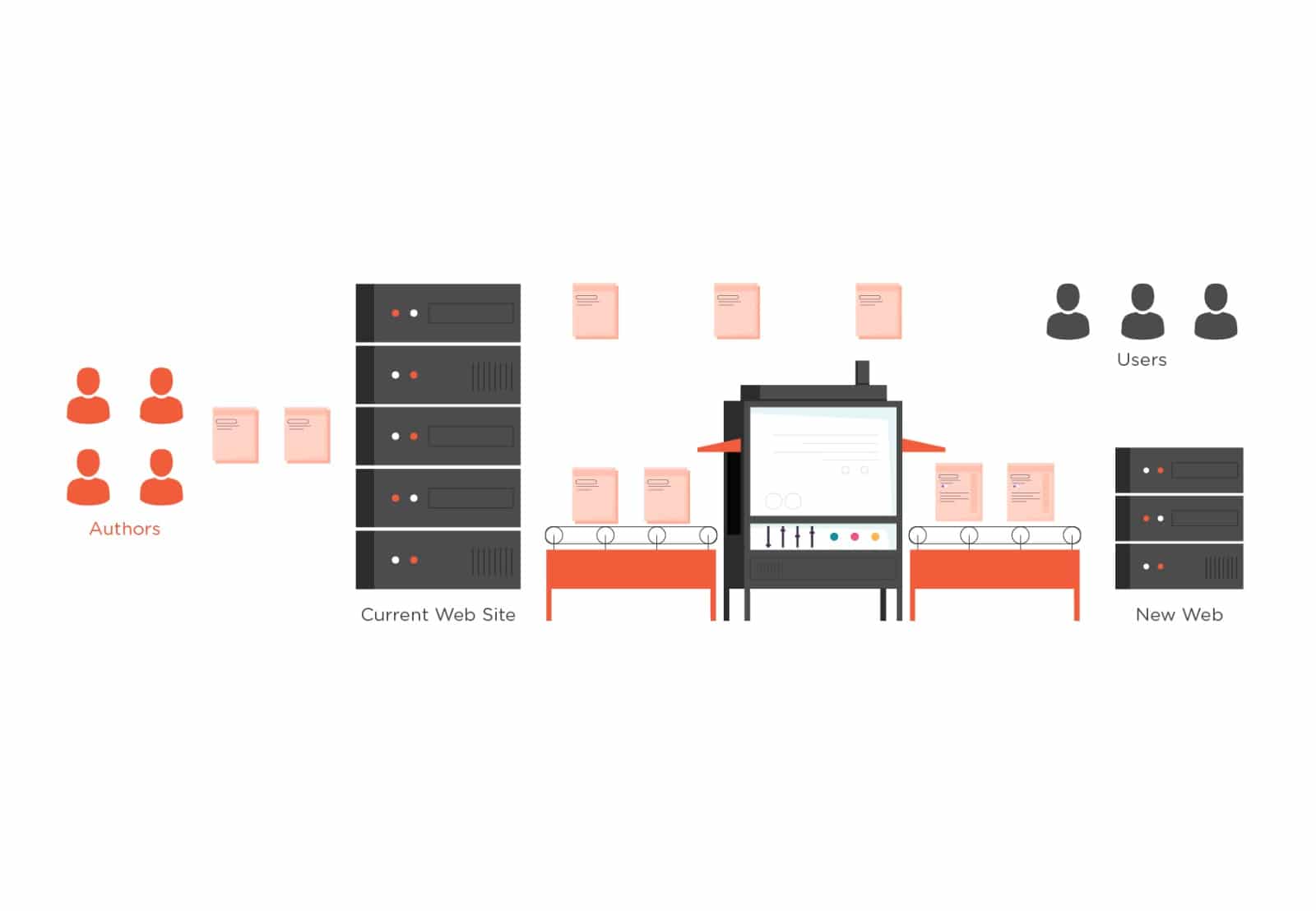
Why smart online publishers choose continuous data migrations when replatforming
Data migrations between content management systems while replatforming can be a daunting and complex task.
Migration problems can cause a site to crash and data and information can be compromised or lost, all of which impact on an organisation’s reputation and—ultimately—your bottom line.
The good news is that there are ways to approach content migrations that will vastly improve your chances of success.
When we work with publishers who have large content libraries and are adding content regularly, we approach these migrations with the live or continuous migration concept. Rather than the content migration phase of a replatforming project being a single step, it becomes an ongoing process with significant benefits to the development and project team.

The benefits of a continuous data migration
1. Improved efficiency as a result of simpler technical solutions
A continuous or live migration means you must account for both “adding” and “updating” in your migration logic in the initial build. While this means you have to do a little more work initially, it quickly pays off by reducing complexity later.
A single process is much easier to build, maintain, extend and monitor. It’s more efficient as you don’t have to spend time building two nearly identical processes.
Building a continuous sync process offers a clear structure to follow and guide for development/design. It also helps clarify early decisions regarding how data updates will be handled. This integrates well with WordPress, which often covers both the add and update functionality from a single function (e.g. wp_insert_post())
The development process for the data migration becomes incremental. This means you focus on the initial must-haves and basics and then iteratively expand the data migration throughout the project. Not having to try and guess while accounting for all the unknowns means you can focus purely on the task at hand. Additional complexity is added as necessary.
2. Smoother WordPress migrations
The greatest advantage of a live migration is that this process shapes the development cycle all the way to launch.
Ongoing testing and user acceptance testing (UAT) is much easier to deliver. This allows stakeholders to view, test and provide valuable feedback earlier and throughout the development cycle.
This minimises the likelihood publishers will presented with a dissatisfying solution after a long period of waiting—such as can be experienced with more traditional waterfall project management. The feedback is also easier to respond to dynamically. You can make updates and then check the latest sync to verify/test changes.
With continuous migration, changes can be made to the dataset in the existing/source system/CMS which will be reflected in the next synchronisation. Think of the new development site as a almost-realtime clone of the older site.
As additional features are built in the new system, it’s much easier to retroactively update the data migration process to account for them.
All of the data doesn’t need to be migrated from the beginning. This means you no longer have to worry about perfecting the data migration and safeguarding it against all possible scope/requirements changes.
3. Improved stakeholder experience
Replatforming a large publishing website is not as simple as a quick redesign, it’s a company wide change project that will be more successful when there’s buy-in from all departments.
Stakeholders can familiarise themselves with the new system during development—prior to launch. This allows for invaluable feedback and guidance. It also reduces potential UI/UX shock during handover. Team members are able to test and use the new platform during the migration process, rather than be presented with an end product and expected to quickly learn how it works.
Adopting a continuous migration process integrates easily with agile project management methodologies. Once the basic structure of the migration process is constructed, subsequent steps, refinements and features are handled easily as user stories.
- Further changes can then be identified and made without significant budgetary consequences.
- At launch, the switch-over period is greatly reduced, meaning the site downtime is minimised.
- Similarly, there’s no need to freeze content for multiple days while data is migrated over.
4. Reduced risk for online publishers
Data migrations, by nature, are incredibly high-risk undertakings as you’re dealing with one of your company’s most valuable assets—its data and information. The continuous sync minimises risk during migration or replatforming given the ongoing exposure of the working pieces throughout development.
- The process is continuously running and able to be tested/reviewed as required. The amount of scrutiny the code can be subjected to is much greater than a quick glance at 1am on the day of launch before switching over to the new system.
- There is no risk of having to frantically include ‘update’ functionality late in the project when requirements change. This process was built in and tested from the start.
- Because the synchronisation is continuous, server load issues are less significant. The data is migrated over a longer span of time, which places much less load on the server. In addition, there’s less need to worry about the synchronisation taking longer during launch than predicted/determined during testing.
- As the new system is synchronised alongside production, switching over can happen in a very short window as both sites can be live simultaneously.
Remember that a continuous synchronisation process isn’t exclusive to data migrations. It can be used when there is a need to move data from one place to another. One great example would be content syndication from an affiliate site. The process can be used to check/update content continuously and bring the benefits described above.

